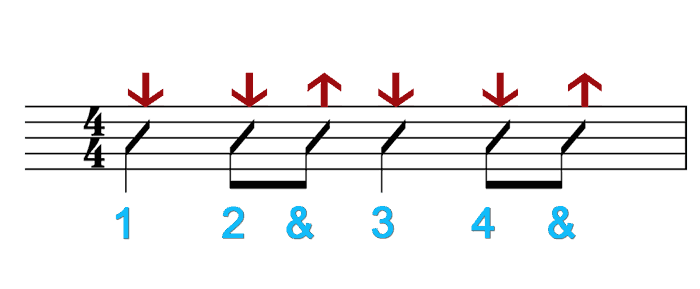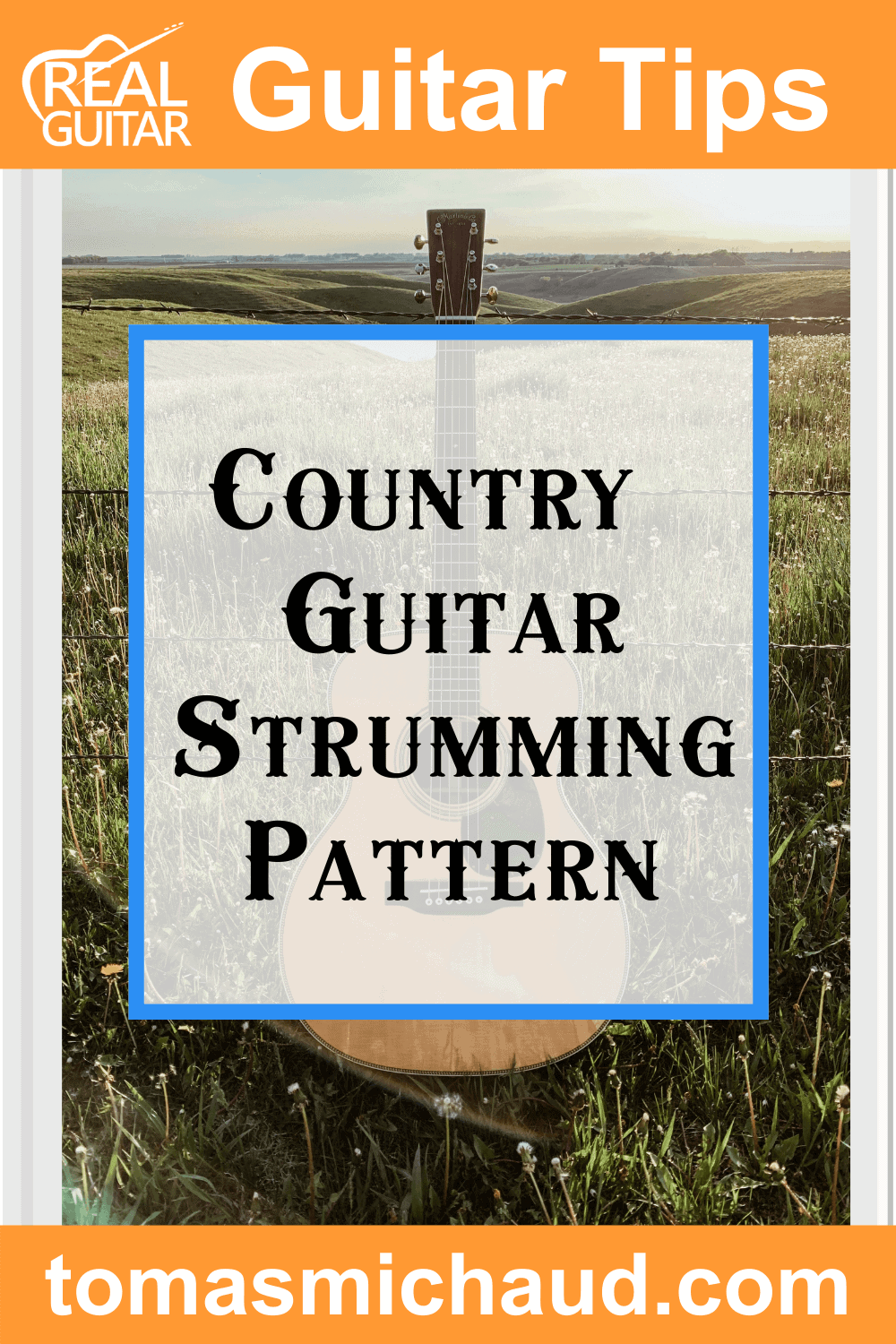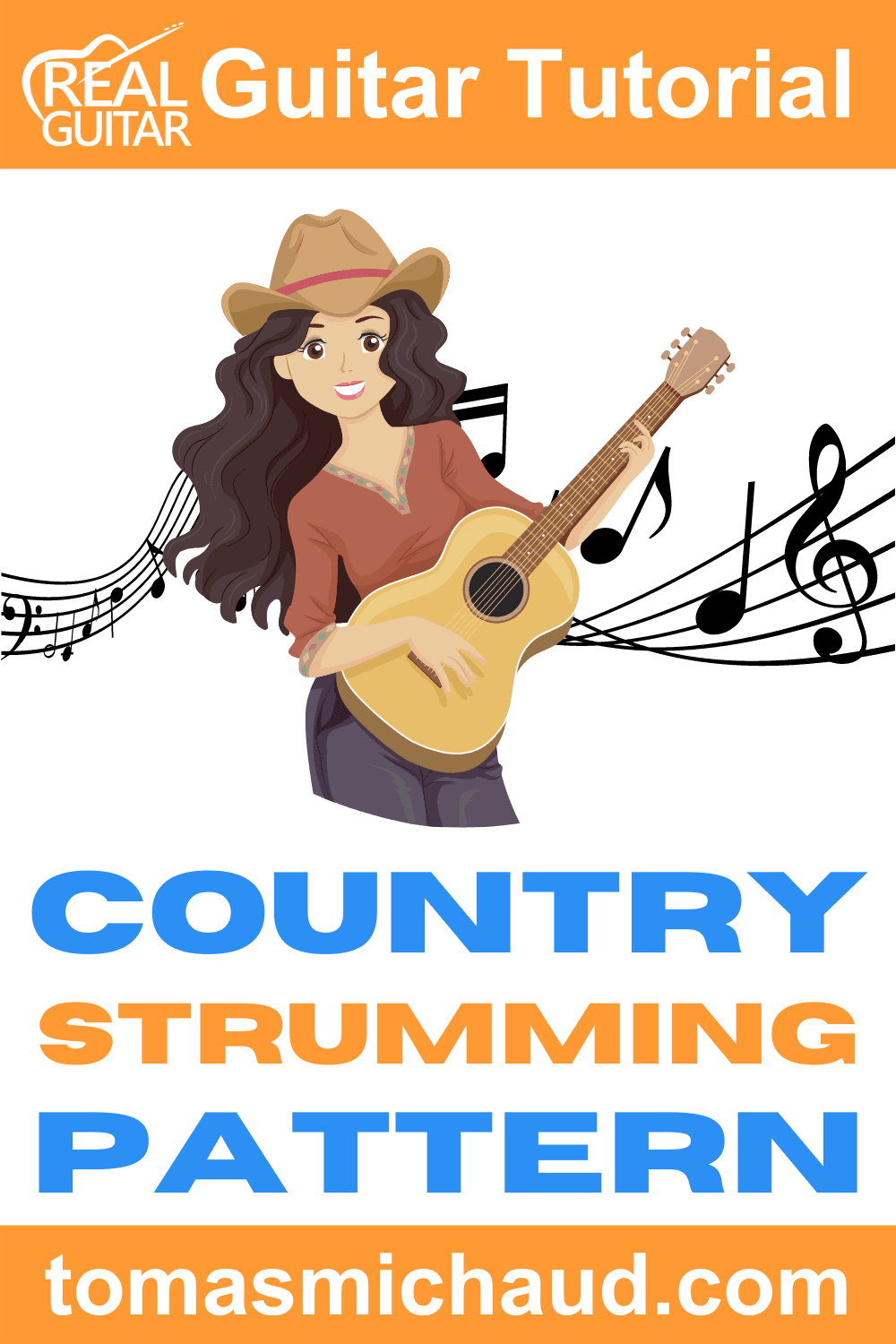
A Good Question:
I received this question from Nick recently…
“Tomas, I really like your lessons and I’m looking forward to learning a lot from you. I have one question, Your pop rock strum really doesn’t work for me since I’m mainly into traditional country and western swing. Do you have a strum pattern that I could use for 3/4 & 4/4 time with my type music. Thanks so much.”
Answer: Yes… In fact several. But there is one pattern that I would recommend learning right away if you don't already know it. It's commonly referred to as the “Boom-Chicka” pattern because that's a fair description of the sound when it played up-tempo.
This rhythm is likely derived from what some people call “the Carter Strum”. First you hit the bass note on the 1st beat, then strum down and up on the 2nd beat. Continue on beat 3 hitting the bass note, then down and up again on beat 4. Hence the name Boom (bass) Chick-A (down-up).
Why Is This The #2 Pattern?
Because if you're a brand-new beginner the #1 pattern to learn is the simple Basic Strum… down, down-up pattern. This is the first pattern I teach in my Rapid Learning System 101 course and is a foundation for many many other patterns.

If you want to play most forms of traditional country and folk music the Boom-Chicka is a good #2 strum pattern to learn. It's a little more difficult and builds off the Basic Strum pattern.
____________________________________________________________
If you're a Real Guitar School member you can find my Rapid Learning System 101 with 42 step-by-step lessons on the main dashboard along with all the other modules.
Not a member yet? Find out what you could be learning here.
____________________________________________________________
Is This Strum Only Used For Country Music?
For most beginners it's not always clear which bass note to hit to create the “boom”. Usually the best bass note to use is what we call the root of the chord. So what is the root? One way to think about it is it’s the same as the name of the chord. If it is an A chord the root would be the A note in the bass. If it's a C chord it would be the C note in the bass.
If you know enough music theory and the names of the notes you can always figure this out. For most people the best way to learn this is to memorize which note to hit on each chord. It just takes a little practice.
Alternating The Bass Notes
Another way to play this strum is to alternate the bass note between the root of the chord and the 5th. To make it even a little more interesting you can often choose between a higher 5th and a lower 5th bass note.
Again the best way to learn this is just memorize the bass notes for each chord. It may sound complicated on paper but I’ve found it's not that hard for most students to learn because it makes sense in your ear. It's something you've heard over and over.
How Should I Practice This?
I've included an exercise to practice on the cheat sheet included below. It's a common chord progression with the strum pattern written out in each measure. I recommend following these steps:
1. Practice the rhythm first without a chord. I have students put the left hand over the strings to mute them. Just hit the 6th string bass note and strum down-up. You can also try using the 5th string bass note for variety.
2. Now practice using each chord in the progression with the proper bass note for that chord. I've included chord diagrams with the blue box around each of the root notes for each chord. That would be the main bass note.
3. Now try playing the progression slowly with the strum. For this step don't worry too much about keeping a rhythm. Just get the feel of the change from one chord to another.
4. An optional step here is to practice individual chord changes that you find difficult. For example you might find going from the C chord to the D chord a little more difficult. Practice strumming two measures of C, and then change and play two measures of D.
5. Practice the progression in time. This means without slowing down or speeding up as you change chords. You can keep a slow steady pulse by tapping your foot, or just feeling it. At some point I recommend trying it with a metronome so you can measure your speed.
6. The last step is to speed up the progression little by little until you can play the rhythm so it sounds clean and smooth, as well as change chords without hesitation. Using a metronome is a good way to measure your progress.
Tell Us What You Think - Please Comment Below!
We would love to hear your comments and questions. What specific things are you struggling with while learning guitar?
Add To Pinterest




Nice lesson as usual, BUT I would like a cheat sheet or something for the fancy fingering that you did in the end! PLEASE?
Yeah i do want that 🙂
Your country beginner strum pattern was great and when you did the advance pattern you became a speeding stray bullet. I asked my self where did he go and how did he go. I got lost and good teachers never get there students lost. When I drive my car I never start in 1st gear and jump to 5th gear. Maybe you could do it over and slow it up. I’m not much for reading but seeing how it was played. I know you’re great teacher and I believe you know where I’m coming from. Thanks for all you lessons. You are one of the best instructors I’ve seen and brother in my 68 years of life I’ve seen a lot.
Hi Jon. Thanks for your feedback. It’s not likely I’ll go back and do the lesson again, but I’ll keep that in mind for future lessons. Take care, Tomas.
Alternating bass usually uses the first and the fifth notes of the chord. I noticed that for the key of G you chose to use the first and the third of the chord rather than the first and fifth (which I think sounds better). Any particular reason why you did this?
Hi Marian… Thanks for your comment.
Often beginners are taught that and alternating bass consists of the root (first note) and the fifth. It’s not wrong, it’s just a simplification. In actual performing I use the third quite often… And even sometimes notes that are not in the chord as passing notes. The next step for you could be to start experimenting with the third of the chord. There is no magic formula. Use your ears and trust what sounds good to you. – Tomas
Hi I am trying to figure out how to strum to the song Ain’t no grave by Hillary Scott and scott family or crowder not Johnny cash’s version. I am really struggling. Just wondering if I could get some help with that?
The riff Tomas is playing at the end is:
G Gcord A B
C Ccord D E
D Dcord E F#
Gcord
Use only the 3 lowest (top) strings for the individual notes. The first E is played on the 4th string and the last E on the 6th string.